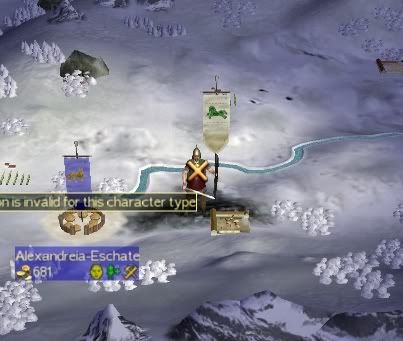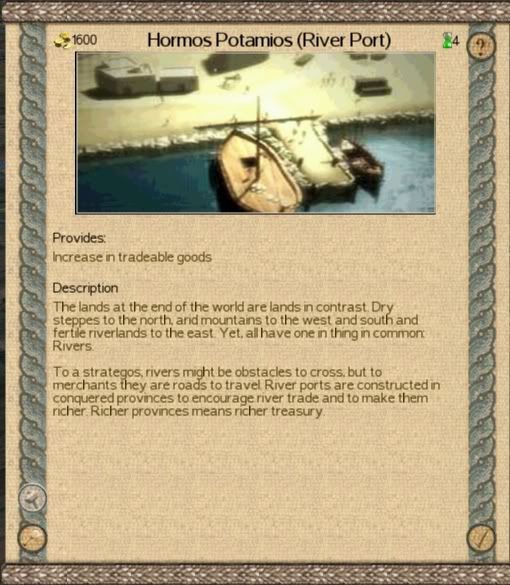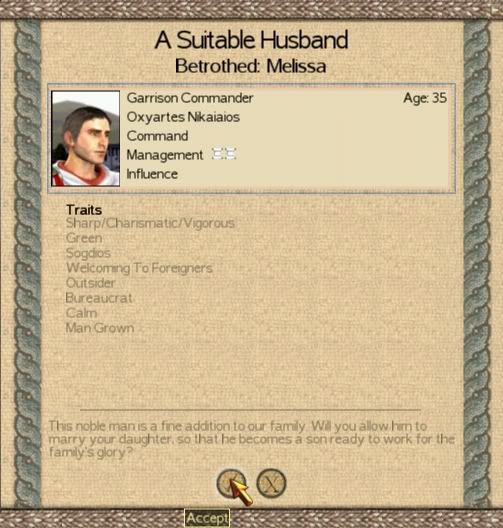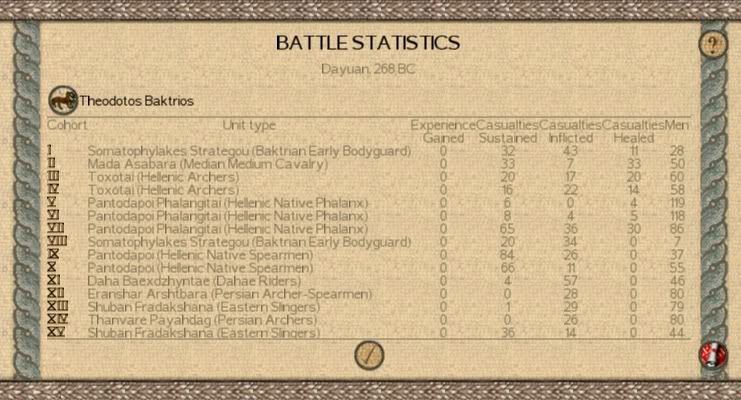Opulentissimum Illud Mille Urbium Bactrianum Imperium*

Chapter I: Theodotus, Mille Urbium Bactrianum Praefectus**
Part II: The Pahlavean Wars: The Early Years(267 BCE - 266 BCE)
When Diodotus I declared independence from Seleukia, he knew that it was a bet he would very likely lose. The Arche Seleukeia in 272 BCE was the largest land empire on earth, it's standing army amongst the most formidable in the known world.

The Arche Seleukeia (Seleucid Empire) c.272 BCE
Thousands of loyal Hellenes had resettled in Babylonia, Syria, and other fertile lands of the empire following Alexandros' conquests. These men's descendants were now firmly entrenched in several cities throughout the empire, giving their support to Antiochos I Soter in the form of military service in Seleukeia's Armies. Thousands of regional auxillaries also bolstered Antiochos' military. The Arche Seleukeia also had a tremendous taxpayer base from which to extract taxes for infrastructure and administrative and military upkeep.
For all of it's strength's and virtues, Diodotus knew that this juggernaut of men and metal also had some glaring weaknesses. The vastness of the Arche Seleukeia was almost as much of a weakness as a strength, for there were hundreds of thousands of habitable square miles which the empire was obligated to defend. The border of the Arche Seleukeia stretched for thousands of miles, through every sort of terrain. These lands were constantly under threat from envious outsiders. The bureacratic machine of the Arche Seleukeia was also vast beyond measure, that, coupled with the naturally slow movement of news in these times, often meant the emperor would recieve important messages weeks, or even months, after the news was relevant. It was for this reason that satraps became themselves like kings, especially in the far east of the Empire.
If these weren't problems enough, Ptolemaioi Philadelphius and Antiochus I Soter, while not nominally at war, we're both forced to garrison large armies on their respective borders, lest one break peace and attempt to annex land from the other. It was in this hostile atmosphere that Diodotos I had grown up and eventually gained the commission of satrap shortly after Antiochos I Soter came to power. He was charged as "Defender of the East" by Antiochos I himself, and expected to defend his emperor's claims in Baktria, to the death, if needs be.
Diodotes I was, in the beginning, a stalwart ally of Antiochos I, defending the emperor's easternmost provinces from nomadic incursions. For five years, Diodotus defended the Satrapy of Baktria from barbarous nomads, all the while growing more and more disillusioned with Antiochos' ability to effectively control these lands...his lands.
Diodotus realized that it was he, not Antiochos I Soter, who had defended the Seleukid East. Therefore, he felt quite justified when he declared Baktrian Independence in the spring of 272. He expected that Antiochos I Soter, being preoccupied with rebellions in Asia Minor and the threat of the Ptolemaioi in the west, would not challenge him, and for five years he was right. Trade continued between Aria and Baktria just as it had before, and people crossed the borders rather freely.
Peace would not last, however.
Following the Battle of the Davan in 268 BCE, Diodotus I had retired to his capital at Baktra. Having arrived in the capital in the spring of 267, Diodotus I arrived just as the new Palace of Baktra was being finished.

Meanwhile, Baktrian Diplomats had been sent far and wide, forging trade agreements and alliances with many different nations.


In autumn of 267 BCE, Antiochos I Soter ordered his vassal king, Arsaces I of Pahlava, to attack the Baktrian-controlled Kingdom of Sogdiane.

Arsaces sent a relatively large force, led by Prince Achaemenes, to attack the capital city of Marakanda.
Oxyartaios Nikaioas, having recently been named Ruler of Sogdiane, had begun recruiting local levy troops when Pahlava first invaded Western Sogdiane and began burning crops and razing villages.
Now, the Parthians were at his door, and he would be forced to defend Marakanda in the spring of 266 with an inferior force of local pantadapoi and a few regional archer divisions.


The First Battle for Marakanda c. 266 BCE
Oxyartaios Nikaioas, son-in-law to Diodotus I and third in line for the throne after Diodotus II and Patrokles Marakandios, was unable to repel the attackers, and the young Baktrian Nobleman was cut down in the streets of Marakanda. Princess Melissa would mourn him for the rest of her life.



Following the loss of the battle, the Pahlavans annexed the entire Kingdom of Sogdiane in the name of Antiochos. Arsaces was to be allowed to govern the kingdom as he saw fit, as long as Pahlava paid it's yearly tribute to Seleukeia.
Patrokles Marakandios and the Royal Allied Army was just over a season's march away, as the Royal Allied Army had been stationed in Alexandria-Eschate shortly following the invasion of the Davan some six years earlier to guard against any further nomadic incursions.
Upone hearing of the fall of Sogdiane, Patrokles Marakandios immediately set out for the west, intent on retaking the Kingdom of Sogdiane before the winter's frost set in.
Late in the year of 266 BCE, the Shahrdar Arsaces passed away, and his son Ardumanish became Ruler of the Pahlava Empire. The Kingdom of Sogdiane was to become the third province of the empire, and the Sogdoi were to lose the autonomy they enjoyed under Diodotos' rule.
The War Over the Kingdom of Sogdiane: The Second Battle of Marakanda
Late in the year of 266 BCE, Patrokles Marakandios passed into Sogdiane and layed siege to the capital at Marakanda.
By autumn of 266 BCE, Patrokles was ready to attack the gates and bring the Kingdom of Sogdiane back under his control.
The following excerpt is from Patrokles Marakandios personal memoirs....
September 23, 266
My men are eager for battle. We have surrounded the city in an attempt to starve the wretches out. The Pahlava are a barbarous people, but they are skilled in the art of the bow. I will take them by surprise at first light. I know this city well. My men are ready to die for their King, as am I. For Diodotus, we will break these gates, and then we will break the men behind them.

The battle would be hard fought...

The Second Battle of Marakanda c. 266 BCE
Scenes from the Second Battle of Marakanda:











Patrokles and Achaemenes battled for what seemed like an eternity, with Patrokles finally slaying the Pahlavan Prince with a sword blow to the neck...


The battle was a clear victory for the Baktrian Allies, and the Kingdom of Sogdiane was annexed back into the Baktrian Realm. Diodotus named Patrokles Marakandios as King of the Second Kingdom of Sogdiane, which was officially established in the autumn of 266 BCE...

Following the annexation of the Kingdom of Sogdiane, Diodotus I led his Royal Baktrian Army from Baktra, and headed north, ready to meet up with Patrokles' Royal Allied Army.
The combined might of the Baktrian Armies would invade Pahlava in 265 BCE. The city of Kiat was a strategically important city on the Oxus River, and Diodotus I knew if he brought the city into the Baktrian Realm, the Pahlavans would be forced to accept peace on Baktrian terms. Little did he know, that it would be the last military campaign of his life....

* "The extremely prosperous empire of the thousand cities of Bactria" Justin, XLI,1
** "Diodotus, the governor of the thousand cities of Bactria " Justin, XLI,4
Source: Wikipedia Article on Diodotus I
End of Chapter I Pt. II
Well, it isn't that big, because I've decided to do a part III. I'm no Chirurgeon, so it takes me a little longer to write the chapters (try getting a free minute with a 2 year old and a pregnant wife...not an easy thing to do). 
There is going to end up being about 80 pics just for Diodotus I reign, so it's taking me a while to edit and upload (especially with dial-up). Hope it doesn't suck, and stay tuned for Chapter I, Pt. III. It will be interesting, at the very least.



























 Reply With Quote
Reply With Quote


















































 I'll never go back now that I have broadband.
I'll never go back now that I have broadband.

Bookmarks